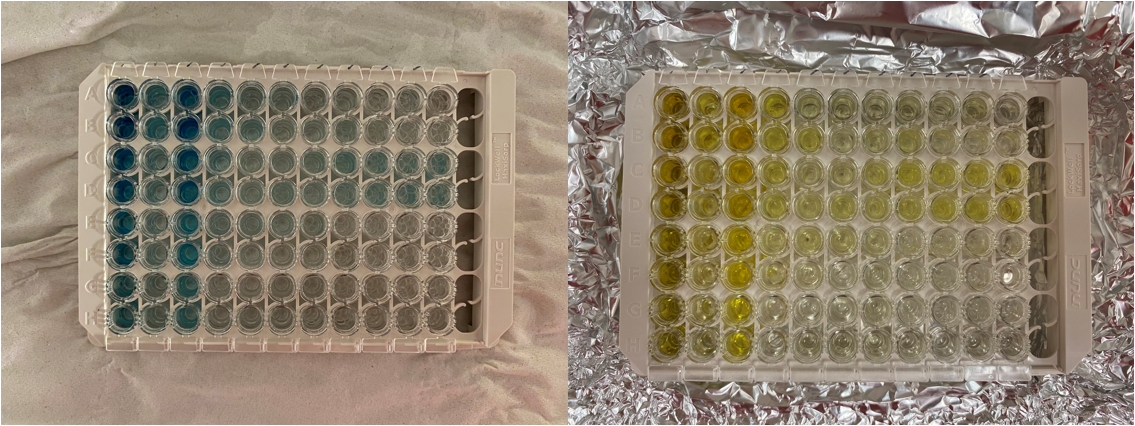✍️ Author: Dr Eleni Christoforidou
Home
Colour change before and after addition of an acid. The colour intensity is proportional to the concentration of the protein.
A Day in the Lab: Determining Protein Concentrations with a Biochemical Assay
🕒 Approximate reading time: 4 minutes
Today's lab work centred on a biochemical assay to determine the concentration of a protein released by brain cells post their pro-inflammatory activation by a bacterial component. To achieve this, I administered the appropriate compounds to the cells in culture and let them incubate overnight. Subsequently, I collected the compounds released by the cells and utilised them in a sandwich ELISA (Enzyme-Linked Immunosorbent Assay). This process helps detect if the protein of interest is among the substances released by the cells and quantifies its concentration, providing insights into the cells' pro-inflammatory state post-treatment.
Timelapse: Carefully loading the samples into a plate pre-coated with the capture antibody.
Understanding the Sandwich ELISA
A sandwich ELISA is a biochemical assay used to identify the presence of an antigen, usually a protein, in a liquid sample. This identification is achieved with the use of antibodies specifically directed against the protein under consideration. Here are the steps we follow in a sandwich ELISA:
- Preparation of a plate by binding it with a known quantity of capture antibody.
- Blocking any nonspecific binding sites on the surface.
- Addition of the antigen-containing sample to the plate, where it's captured by the antibody.
- Washing the plate to remove any unbound antigen.
- Addition of a specific antibody that binds to the antigen, creating a 'sandwich' with the antigen trapped between two antibodies.
- Application of enzyme-linked secondary antibodies that also bind specifically to the antibody, acting as detection antibodies. This enzyme is an amplifier, producing numerous signal molecules even if only a few enzyme-linked antibodies remain bound.
- Another wash of the plate to remove unbound antibody-enzyme conjugates.
- Addition of a chemical to be converted by the enzyme into a colour signal.
The resulting colour intensity is proportional to the concentration of the protein, and it can be measured by absorption spectroscopy to determine the presence and quantity of the antigen.

Such biochemical assays are integral in the study of cellular behaviours and responses, providing valuable insights into various cellular processes.